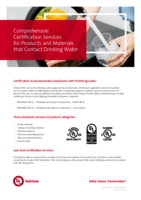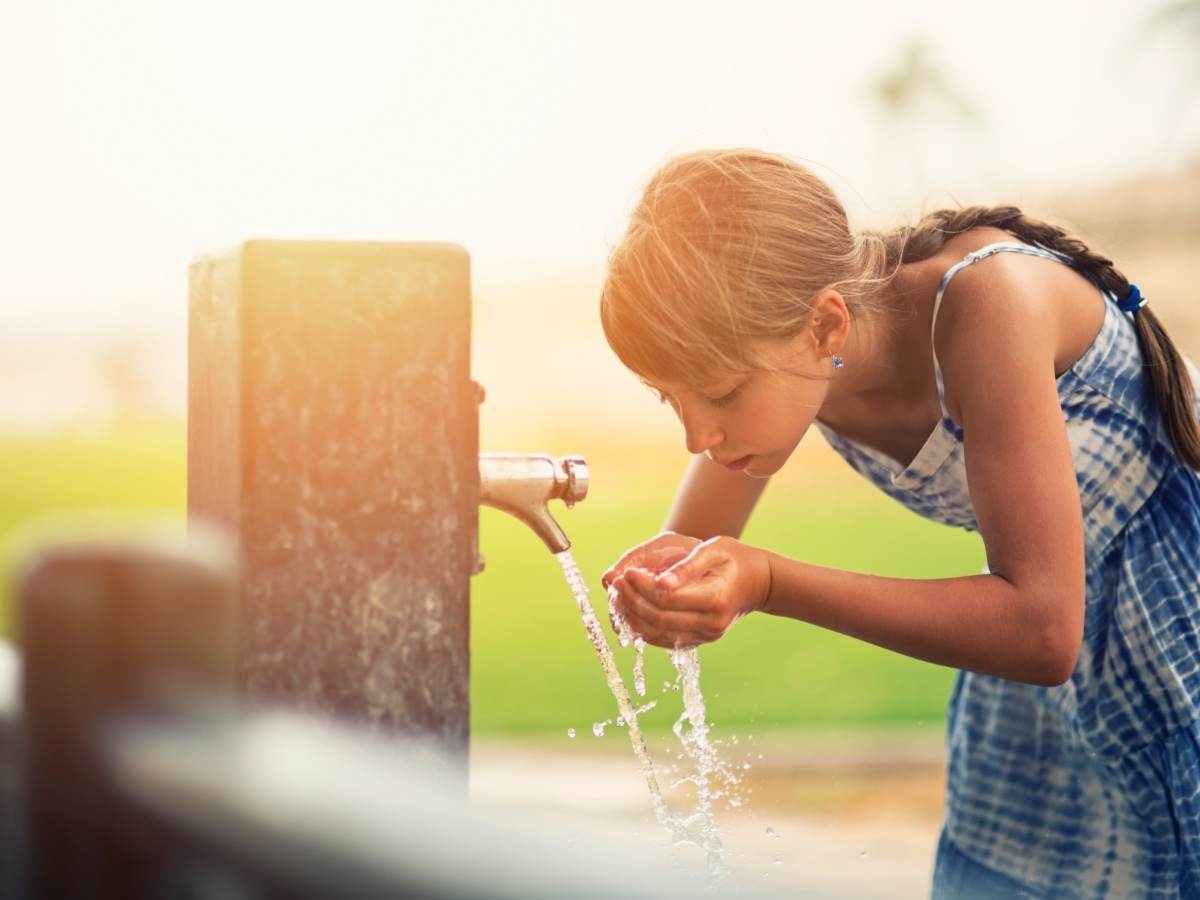
Drinking Water Product Certification
Simplify the process of getting safer water products to market with our testing and certification services to NSF/ANSI/CAN 61 and NSF/ANSI/CAN 372.

From water treatment to the tap in your home, products that contact drinking water can impact the quality of what we drink. Consumer and regulatory officials are becoming more concerned about the effects of lead and other contaminants in drinking water. If your company manufacturers devices, components or materials, your products will need to be evaluated for health effects and lead content to meet regulatory requirements in the United States and Canada. Certification also helps protect your brand and mitigate product material-related risks for your buyers and users.
We are accredited in the United States and Canada to offer certification to NSF/ANSI/CAN 61 – Drinking Water System Component Health Effects and NSF/ANSI/CAN 372 - Drinking Water System Components — Lead Content through the Water Systems Scheme. Inspectors and regulators look for the UL Mark on drinking water products to have confidence that products meet these requirements.
Our experts offer highly responsive customer service and turnaround times to help ensure products get to market quickly and painlessly, while our global presence allows us to provide you regional support. When you partner with UL Solutions, you have direct access to our experienced technical staff, who will quickly answer questions, no matter how complex your product or testing needs.
NSF/ANSI/CAN 61 — Drinking Water System Components — Health Effects evaluates the chemical contaminants that leach out of products into drinking water.
NSF/ANSI/CAN 61’s scope includes most products in contact with drinking water, including:
NSF/ANSI/CAN 61 is required by most states and provinces in the United States and Canada. For water supply and distribution products, compliance is typically mandated by the states, while in the built environment, the major model plumbing codes mandate certification. Retailers, distributors, contractors and other buyers, aware of the state and code requirements, typically require certification as well.
Products evaluated to NSF/ANSI/CAN 61 are exposed to test water for a sequence of time specified in the standard. The resulting water samples are analyzed for contaminants according to a custom test program developed for the product based upon the materials of construction. Detected contaminants are compared to pass/fail levels established in the standard to determine compliance with NSF/ANSI/CAN 61 requirements.
NSF/ANSI/CAN 372 — Drinking Water System Components — Lead Content evaluates the lead content of products based on the wetted surface areas of water contact materials.
NSF/ANSI/CAN 372 covers products that convey or dispense water for human consumption through drinking or cooking. Most products within the scope of NSF/ANSI 372 are also under the scope of NSF/ANSI 61.
The U.S. Reduction of Lead in Drinking Water Act sets requirements for lead content and requires third-party certification of products that convey drinking water. A number of states, like California, have set similar lead requirements. Retailers, distributors, contractors and other buyers often require certification as well. Certification by UL Solutions to NSF/ANSI/CAN 372 is the most effective way to show buyers and regulators that you meet the law.
A list of wetted parts, including lead content and wetted surface areas, is submitted to UL Solutions for each product or group of products undergoing evaluation. We will test high-impact materials, as defined by the standard, to confirm the lead content matches what was submitted. After testing is complete, each product must have a calculated weighted average lead content of no more than 0.25% to comply with NSF/ANSI/CAN 372 requirements.
When all NSF/ANSI/CAN 61 or NSF/ANSI/CAN 372 certification requirements are met, authorization is granted to use the UL Mark on your products. Your products will also be listed in UL Product iQ™, UL Solutions’ online certification directory. The UL Mark and Product iQ listing demonstrate to regulators, inspectors and specifiers that your products comply with the applicable health effects and lead content requirements.
Thanks for your interest in our products and services. Let's collect some information so we can connect you with the right person.